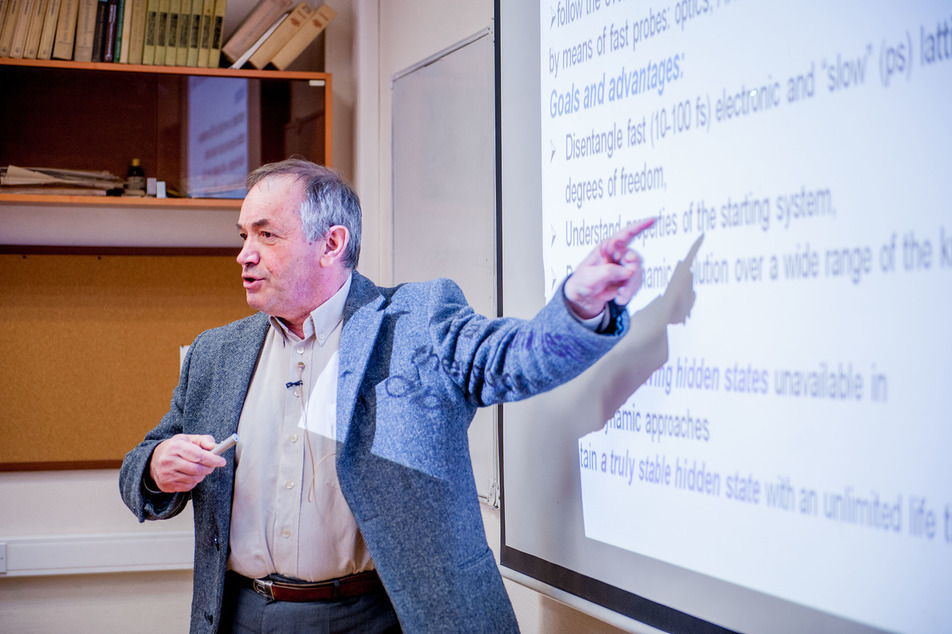An international group of scientists, including NUST MISIS’s Professor Serguei Brazovskii, recently presented their research on altostratus materials of tantalum disulfide, which shows that the material’s opposition could be countered with a unique high speed revolution of an electrical conductor to an insulator and back. Ultrafast switching allows the use of the material in modern electronics as a nonvolatile element of memory for the new generation.

In May 2016, the international journal Nature Communications published an article summarizing the research of NUST MISIS Professor Serguei Brazovskii and of The Jožef Stefan Institute`s Professor Dragan Mihajlovic. The research was the synthesis of Brazovskii’s theoretical work, conducted at NUST MISIS and The National Center for Scientific Research (CNRS) as well as a corresponding experiment carried out under the direction of Professor Dragan Mihajlovic at The Jožef Stefan Institute.
Professor Serguei Brazovskii managed to build a theoretical description of a particular latent state of a substance made of titanium disulfide, which is a material that can be reached only through the influence of external factors. This unique chemical compound has an unstable internal lattice of electrons, which can fundamentally change due to external momentum, transforming the physical properties of the material itself. This hidden, or latent, state was discovered by scientists in experiments only as recently as 2014.
The Professor developed the prior theory by himself to describe a model of switching the states in the conductor-insulator. “We found a complex mechanism for the formation of a system of charged domain walls (boundaries separating the areas of a model in normal and hidden states), that are generated due to the instability of electronic lattice. It allowed us to explain the observed experiment: injected charges (i.e. introduced into the model from the outside, in this case, using laser pulses) create moving domain walls transforming the material from an insulator to metal”, said Professor Serguei Brazovskii.
During the experiment the model of tantalum disulfide, less than 100 nanometers in total, is irradiated with ultrashort lasers or electric pulses which generate ultrashort electric currents and produce a switch of the states in the conductor-insulator. So, one and the same piece of material with a certain external influence, in this case high levels of speed, can be a conductor of electric current and its own insulator.
This property of tantalum disulfide might be applied to create nonvolatile elements of electronic memory which can retain information even if a power supply is disconnected, thanks to the stability of the substance’s latent state.
The fundamental difference between this new innovation’s memory elements’ ability and the traditional dynamic random access memory (DRAM) is the speed of information recording. This new technology is light years quicker than DRAM. Ultrafast memory elements using tantalum disulfide will be able to be switched by an electric voltage controller in a time of about one picosecond, which is more than 10 times faster than the fastest existing analogues.
1Nature Communications, 7, 11442 (16 May 2016), Fast electronic resistance switching involving hidden charge density wave states, I. Vaskivskyi, I. A. Mihailovic, S. Brazovskii, J. Gospodaric, T. Mertelj, D. Svetin, P. Sutar and D. Mihailovic.


